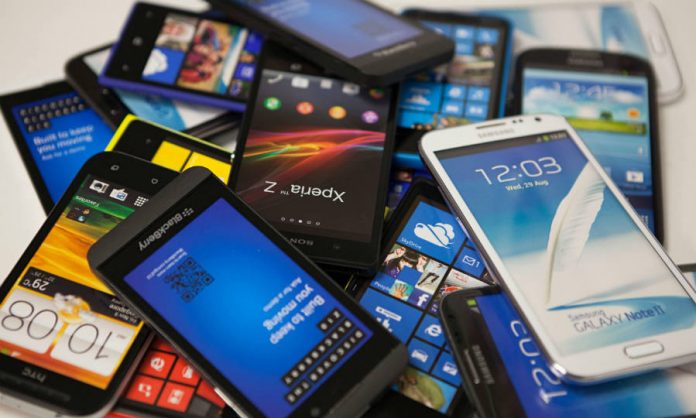
Choosing a smartphone can be tricky, as there are hundreds of devices offering plenty of features and prices. Some users prefer a good looking product, while others go for the more hardware-demanding handsets.
However, it can be difficult to establish a good specs/cost relation when buying a smartphone. Also, sometimes the buyer doesn’t know what a ‘quad-core GPU’ or a ‘4GB RAM memory’ are.
What follows are a series of tips and simple concepts to help users choose the right handset for their needs. The list is divided into the key aspects of a smartphone.
The processor is the most relevant aspect
A processor (CPU) is the brain of the smartphone. It handles all the things related to the device, including apps, cameras, GPS, and calls. To achieve that, processors send instructions to cores. Each core is capable of executing a task.
In short, more cores in a processor means the phone will be faster, and can manage multiple tasks without slowing down or freezing. Also, there is the clock rate, which measures the speed of the CPU using the international system unit, Giga Hertz (GHz).
American-Based, Qualcomm, currently leads the processor market with the Snapdragon 820. This ‘system on a chip’ (SoC) has four cores (quad-core) at 1.96 GHz, and Quick Charge 3.0 for batteries, among other features. Some of the high-end phones using this chip are the Samsung Galaxy S7 ($670) and the HTC 10 ($699).
Qualcomm also made the Snapdragon 600 series to power mid-tier smartphones such as the Huawei Honor 5X ($188). It’s a good choice for a moderate performance.
On the other hand, Apple created it’s on chip named ‘A9’ for the iPhone 6S and 6S Plus ($750). Despite the A9 falls a little short compared to the Snapdragon 820 -it’s a dual core at 1.85GHz-, it serves the casual purpose of an average user with no problems.
Other companies like MediaTek are known for providing chips to mid and low-range phones such as the Sony Xperia E4G ($150).
Operating system
There’s always a debate about which OS is the best. Each one has its advantages and weaknesses.
For example, the open-source Android is dominating on smartphones because it offers plenty of customizations on its display, with several launchers and widgets. Also, users will find more hardware choices on Android-based handsets.
However, when a new update of the OS arrives, it usually takes months before it’s available for download.
On the other hand, Apple’s iOS is easy to use, and its Siri assistant is very helpful. Also, the Apple Store often gets the hottest apps before Android, and access to OS updates is available from day one.
Windows 10 mobile has a similar open-source approach with its universal apps. Developers can create one app for both desktop and mobile. Windows’s Continuum enables the user to run the mobile OS on a desktop by using a porting dock featured on phones such as the Lumia 950 ($549).
RAM and storage
If a processor is the brain of a phone, the RAM memory is its muscle. It’s always better to acquire handsets with a minimum 2GB RAM capacity -like the iPhone 6S and 6S Plus-.
Video games, pictures, and videos, usually take up most of the space capacity of a phone. The user should get devices with proper native storage. Most phone makers offer 16GB versions of its products, but a 32GB device -like the Samsung Galaxy S7- would be a better option.
Also, it’s best to look for handsets with expandable space via MicroSD cards, such as the LG G5 ($600-$700). A 128GB MicroSD card costs around $40.
Display and Camera
An excellent display resolution is 2,560 x 1,440 pixels (Quad-HD), while phones like the iPhone 6S Plus offer a solid full-HD panel (1,920 x 1,080) providing plenty of detail.Also, Users should buy handsets with enough brightness to read outdoors.
When it comes to cameras, megapixels are not the only aspect to notice. Handsets like Galaxy S7 and S7 Edge are currently offering the best shooters due to its quick autofocus and aperture (f/1.7), providing great pictures in low light.
Image stabilization is another helpful feature the user should look on a smartphone camera, as it prevents blurs. For example, the HTC 10 is the first smartphone to come with stabilization on its front camera for better selfies.
Screen Size and design
A small screen is less than 4.5 inches. It provides a more compact experience. Phones like the Sony Xperia Z5 Compact ($399) are small but powerful. Medium size handsets such as the HTC 10 (5.2 inches) and the Samsung Galaxy S7 (5.1 inches) are currently the most popular.
Larger devices like the iPhone 6S Plus (5.5 inches) and the Galaxy Note 5 (5.7 inches) are referred as ‘Phablets’ and often need two hands to use, though they’re the best to read eBooks and watch videos.
The attractiveness of a smartphone can vary from one person to another. However, if the buyer cares for aesthetics, a unibody design, found on phones such as the HTC 10, could be a solid choice.
Bonus tip: buying the best smartphone a person can afford is the best way to make a device last longer until the next upgrade.
Source: CNET










